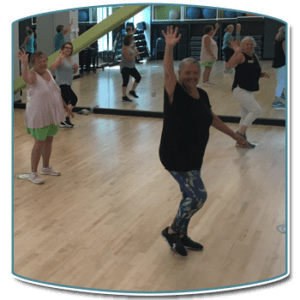The average American spends about 12-13 hours a day seated. One of the effects of all this sitting is a shortening and tightening of the hip flexors, including a major hip flexor, the psoas (SO-as) muscle. Certain sports like cycling and running also contribute to this shortening. A tight psoas muscle can affect athletic performance; for instance, it will make it difficult for an equestrian athlete to sit the trot and get their legs underneath them for optimal riding. In this Trainer Tip, PWC trainer Amy Biddle describes the psoas and an exercise you can do to relieve psoas tightness.
Meet the psoas
The psoas muscle attaches to all the lumbar vertebra, then passes through the hip socket to attach to the femur, or upper leg bone. It is the only muscle that connects to both the upper body and the lower body. The psoas is not only a hip flexor. It is also a lower back stabilizer that helps to “buttress” the lower spine and maintain pelvic neutrality.
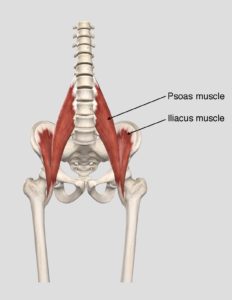
Because of its attachment to the lumbar spine, a tight psoas muscle may lead to a tilting forward and down of the pelvis. This can increase the compressive force on the lower back and possibly cause lower back and hip pain.
Stretching and strengthening may help to relieve some of this tension and pain. However, a standard runner’s lunge will not access the psoas due to its unique anatomy. According to Dr. Stuart McGill, a wellknown expert in back functionality and author of “Ultimate Back Fitness and Performance,” the psoas can only be isolated and stretched with a lunge that includes spine lateral bending with some twist and extension. When stretching the psoas, steady and deep breathing is important because the muscle is intimately connected with the diaphragm through fascia and connective tissue.
How to stretch the psoas muscle
In order to stretch the psoas muscle, step back with your right leg and come into a lunge position. Your right knee can either be off the ground or can rest on the ground. If your right knee is up off the ground, slightly bend your right knee to relieve some of the pressure on your lower back.
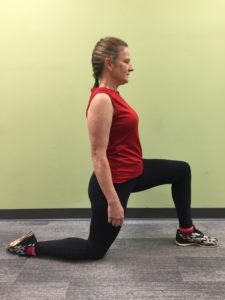
While focusing on breathing deeply and smoothly, slowly inhale and reach your right arm straight up in the air. As you exhale, slowly lean your torso over to the left. Hold this stretch for 3-5 deep breaths. Inhale as you come back upright.
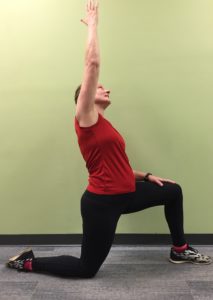
Repeat on the other side.
While stretching is important to relieve tightness, it is also important to focus on building strength and stability in the hip flexors.
Working with a personal trainer will help you build a program to increase the strength and mobility in your hips and lower back.
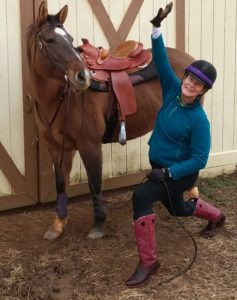
Stretching the psoas from a high lunge
Thanks to trainer Amy Biddle for sharing this tip. Certified as a trainer by the National Council on Strength and Fitness, Amy is also certified by Yoga Alliance to teach yoga. As an accomplished equestrian, physical fitness and strength training have had a positive effect on Amy’s riding.
A trainer can design a program to best meet your individual fitness needs and help you achieve your goals. To get started with a PWC trainer, fill out a personal training inquiry at the Front Desk or contact Preston Will at 540-825-0000 or pwill@culpeperwellness.org

